Have you ever wondered about those green boxes scattered around your city? They're not just random eyesores. These transformer boxes are vital to our urban power supply, but they often stick out like sore thumbs.
Effective pad mounted transformer box enclosures blend functionality with urban aesthetics. They protect critical electrical equipment while seamlessly integrating into city landscapes. Good design considers safety, durability, accessibility for maintenance, and visual appeal to enhance urban environments.
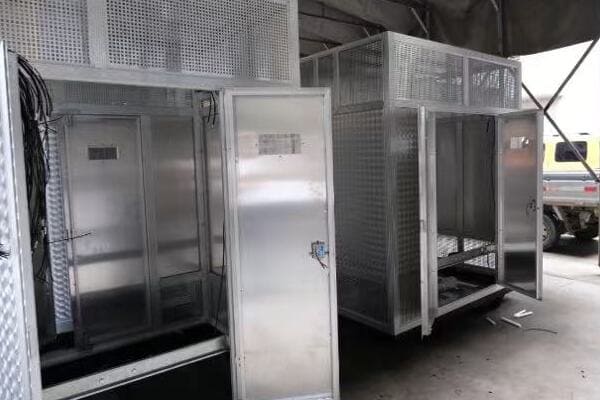
In this article, I'll take you through the fascinating world of transformer box design. We'll explore how these essential pieces of infrastructure are evolving to meet the demands of modern cities, balancing technical requirements with urban aesthetics.
City-Friendly Power: How Transformer Boxes Blend Into Urban Landscapes?
Ever walked past an electrical box and thought, "That's an eyesore"? You're not alone. But what if I told you these boxes could actually enhance our city streets?
Modern transformer box designs prioritize urban integration. They use camouflage techniques, artistic elements, and innovative materials to blend with their surroundings. This approach not only improves city aesthetics but also increases public acceptance of necessary infrastructure.
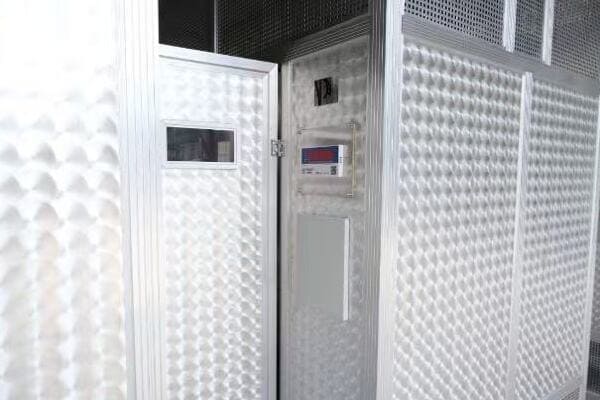
Let's dive deeper into how these boxes are becoming city-friendly:
Camouflage Techniques: Hide in Plain Sight
Designers are getting creative with ways to make transformer boxes less noticeable.
Key Strategies:
- Color matching with surroundings
- Textured surfaces mimicking nearby buildings
- Use of reflective materials to blend with environment
Artistic Integration: From Eyesore to Art Piece
Some cities are turning transformer boxes into canvases for public art.
Artistic Approaches:
- Murals depicting local culture or history
- Sculptural elements incorporated into box design
- Interactive art installations
Green Design: Nature-Inspired Solutions
Incorporating natural elements can help transformer boxes blend into green spaces.
Nature-Friendly Ideas:
- Living walls with climbing plants
- Boxes designed to look like large rocks or boulders
- Integration with landscaping elements
Multifunctional Design: Beyond Just Housing Transformers
Innovative designs are making transformer boxes serve multiple purposes.
Dual-Purpose Examples:
- Seating areas built into box structures
- Information kiosks combined with transformer enclosures
- Bike rack integration
| Design Approach | Urban Benefit | Technical Consideration |
|---|---|---|
| Camouflage | Reduced visual impact | Maintaining proper ventilation |
| Artistic Integration | Enhanced public spaces | Ensuring easy access for maintenance |
| Green Design | Environmental harmony | Managing plant growth near equipment |
| Multifunctional | Efficient use of urban space | Balancing additional uses with safety |
I remember a project in a bustling downtown area where we faced significant pushback from local businesses about installing new transformer boxes. They were concerned about the visual impact on their storefronts. This challenge led us to rethink our approach to transformer box design completely.
We collaborated with a local artist to create custom enclosures that reflected the neighborhood's character. One box was transformed into a miniature replica of a historic building that once stood on that street corner. Another became a canvas for a mural depicting the city's skyline.
The results were astounding. Not only did the businesses stop complaining, but these transformer boxes became local attractions. I saw tourists taking photos with them, and local tour guides even included them in their walking tours as examples of innovative urban design.
This experience taught me the power of creative thinking in infrastructure design. We weren't just solving a technical problem; we were contributing to the city's cultural landscape.
Another interesting case was in a park where we needed to install a large transformer box. Instead of the standard green metal enclosure, we designed a structure that looked like a natural boulder. We used a specially textured concrete mix and even incorporated small plants into crevices in the "rock."
The park-goers were none the wiser. Children would play around it, and people would sit on it to enjoy their lunches. It was fulfilling to see our necessary infrastructure become a seamless part of the park experience.
However, these creative designs come with their own set of challenges. We always have to balance aesthetics with functionality. For instance, when incorporating plants, we need to ensure they don't interfere with ventilation or access panels. With artistic designs, we must make sure that maintenance crews can still easily identify and access the equipment inside.
One particularly innovative project involved designing transformer boxes that doubled as public seating in a busy pedestrian area. We had to carefully consider weight distribution, heat dissipation, and safety factors to ensure the seats were comfortable and safe while still allowing the transformer to function efficiently.
These projects have shown me that with a bit of creativity and collaboration, we can turn mundane infrastructure into assets for our urban environments. It's not just about hiding these necessary components of our power grid; it's about reimagining how they can contribute positively to our city spaces.
As cities continue to grow and evolve, I believe we'll see even more innovative approaches to integrating transformer boxes into urban landscapes. The future of urban power infrastructure isn't just about efficiency and reliability; it's also about enhancing the beauty and functionality of our shared spaces.
Safety Meets Style: The Art of Designing Protective Transformer Enclosures?
Ever wondered how those transformer boxes keep our power flowing while standing up to everything from curious kids to determined vandals? It's a delicate balance of brawn and beauty.
Effective transformer enclosures combine robust security features with aesthetic design. They use durable materials, tamper-resistant mechanisms, and clever engineering to protect vital equipment. Simultaneously, these enclosures incorporate design elements that complement urban environments, turning necessity into architectural assets.
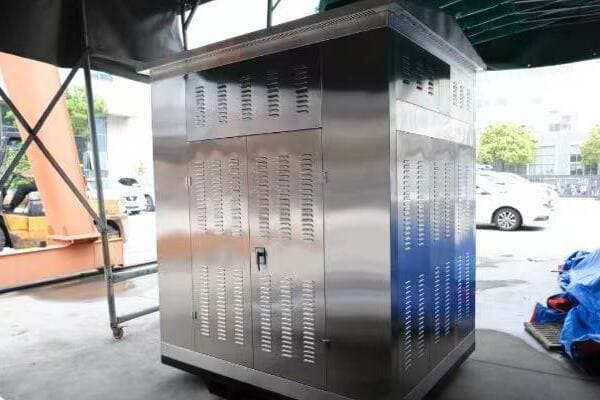
Let's explore how safety and style come together in modern transformer enclosures:
Material Matters: Tough Yet Attractive
Choosing the right materials is crucial for both protection and appearance.
Popular Choices:
- High-strength aluminum alloys
- Reinforced polymer composites
- Textured stainless steel
Tamper-Resistant Features: Keeping Curiosity at Bay
Smart design prevents unauthorized access without looking like a fortress.
Key Security Elements:
- Concealed hinges and locks
- Smooth, climb-resistant surfaces
- Vandal-resistant paint coatings
Ventilation Solutions: Cool and Collected
Proper airflow is essential, but vents can be security weak points.
Innovative Approaches:
- Baffled vent designs
- Integrated cooling systems
- Smart materials that enhance heat dissipation
Modular and Customizable: One Size Doesn't Fit All
Flexibility in design allows for better integration in diverse urban settings.
Customization Options:
- Interchangeable panels for different looks
- Scalable designs for various equipment sizes
- Adaptable mounting options for different terrains
| Design Aspect | Safety Benefit | Aesthetic Consideration |
|---|---|---|
| Materials | Durability and strength | Texture and finish options |
| Tamper-Resistance | Prevent unauthorized access | Sleek, unobtrusive designs |
| Ventilation | Equipment protection | Integrated, hidden vent systems |
| Modularity | Adaptable security features | Customizable appearances |
I once worked on a project in a historic district where we faced a unique challenge. We needed to install high-capacity transformers to meet growing power demands, but the local preservation society was adamant about maintaining the area's 19th-century aesthetic.
Our solution was to design custom enclosures that mimicked the appearance of Victorian-era water pumps. We used modern, high-strength materials but crafted them to look like cast iron. The enclosures featured ornate detailing typical of the period, complete with faux hand pumps that cleverly concealed the venting system.
The result was a perfect blend of old-world charm and modern functionality. The enclosures not only met all our safety and performance requirements but also became talking points for local history tours. It was gratifying to see how our design not only solved a technical problem but also contributed to preserving the area's historical character.
Another memorable project involved designing transformer enclosures for a beachfront promenade. Here, we faced the dual challenges of salt-water corrosion and potential vandalism from late-night revelers. We developed a unique composite material that resisted both chemical corrosion and physical damage.
The enclosures were molded to resemble large seashells, with spiral patterns that weren't just decorative but also made them difficult to climb or deface. The natural-looking texture helped disperse heat, improving the transformer's efficiency. Beachgoers often mistook them for art installations, which was a testament to their seamless integration into the environment.
One of the most innovative features we've incorporated into recent designs is smart monitoring. We've embedded sensors into the enclosures that can detect tampering attempts or abnormal conditions. These sensors are connected to the city's smart grid, allowing for real-time monitoring and rapid response to any issues.
In a university campus project, we took this a step further. The transformer enclosures were designed as interactive information kiosks. The outer panels displayed campus maps and event information, while also serving as touch-sensitive alarm triggers. Any attempt to tamper with the enclosure would immediately alert campus security.
Balancing safety with style often requires thinking outside the box – literally. In a recent urban renewal project, we designed transformer enclosures that doubled as public art pieces. These structures featured kinetic elements powered by the wind, creating constantly changing patterns. The movement not only made them visually interesting but also served as a deterrent to graffiti artists.
However, it's important to note that no matter how creative the design, safety always comes first. Every aesthetic decision must be weighed against its impact on the enclosure's primary function – protecting the transformer. We constantly test new designs against various threats, from extreme weather to deliberate attacks.
As cities evolve and urban spaces become more multi-functional, the design of transformer enclosures will continue to adapt. The future lies in smart, responsive designs that can change their appearance or function based on needs or conditions. Imagine enclosures that change color to match the seasons or display public service announcements during emergencies.
The art of designing protective transformer enclosures is a perfect example of how engineering and aesthetics can work hand in hand. It shows that with creativity and innovation, even the most utilitarian objects can become valuable additions to our urban landscapes.
Weather-Proof Wonders: Keeping Urban Power Safe in Rain, Snow, and Sunshine?
Ever wondered how those transformer boxes in your neighborhood stand up to Mother Nature's worst? From scorching heat to freezing blizzards, these unsung heroes of our power grid face it all.
Weather-proof transformer enclosures use advanced materials and design techniques to protect vital equipment in all conditions. They incorporate features like superior insulation, water-resistant seals, and temperature regulation systems. These innovations ensure reliable power distribution regardless of extreme weather events.
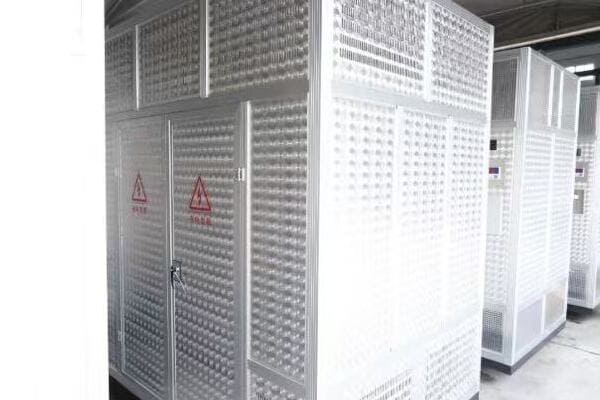
Let's dive into how these weather-proof wonders keep our lights on, come rain or shine:
Heat Management: Staying Cool Under Pressure
Keeping transformers from overheating is crucial, especially in urban heat islands.
Cooling Strategies:
- Advanced passive cooling designs
- Reflective coatings to reduce heat absorption
- Integrated active cooling systems for extreme conditions
Water Resistance: Keeping the Elements Out
Protecting against rain and flooding is essential for electrical safety.
Waterproofing Techniques:
- Raised foundations to prevent water ingress
- Hermetic sealing technologies
- Water-resistant venting systems
Cold Weather Protection: Functioning in the Freeze
Extreme cold can be just as challenging as heat for electrical equipment.
Cold-Proofing Methods:
- Insulated enclosures to maintain optimal operating temperatures
- Heating elements for critical components
- Materials designed to withstand thermal contraction and expansion
All-Weather Durability: Built to Last
Enclosures must withstand years of varied weather conditions.
Durability Features:
- UV-resistant materials to prevent sun damage
- Corrosion-resistant coatings for high-humidity environments
- Impact-resistant designs for hail and debris protection
| Weather Challenge | Protection Strategy | Urban Benefit |
|---|---|---|
| Extreme Heat | Advanced cooling systems | Reliable power during heatwaves |
| Heavy Rain/Flooding | Waterproof designs | Reduced outages in storms |
| Freezing Temperatures | Insulation and heating | Consistent service in winter |
| Long-term Exposure | Durable materials | Lower maintenance costs |
I recall a project in a coastal city that really put our weather-proofing skills to the test. This area faced a triple threat: scorching summers, hurricane-force winds and rain, and salt-water corrosion. It was a perfect storm of challenges for transformer enclosure design.
We started by addressing the heat issue. The enclosures were designed with a double-wall system, creating an air gap that acted as natural insulation. We also incorporated a passive cooling system inspired by termite mounds – a series of vents and channels that created a natural airflow, keeping the transformer cool without any mechanical parts that could fail.
For water resistance, we went beyond standard waterproofing. We designed a raised base with channels that directed water away from the enclosure. The seals were made of a new composite material that could withstand both high-pressure water and salt corrosion. We even tested the design by subjecting it to simulated hurricane conditions in a wind tunnel.
The results were impressive. During a particularly nasty hurricane season, while many parts of the city faced power outages, the areas served by our new enclosures maintained power throughout. One enclosure even survived being submerged for hours when a nearby levee broke – a testament to its water-resistant design.
Cold weather protection was another interesting challenge we faced in a different project. In a northern city prone to severe winters, we had to ensure the transformers could function in sub-zero temperatures. We developed an enclosure with a smart heating system that activated only when necessary, maintaining optimal internal temperature without wasting energy.
This system was put to the test during a record-breaking cold snap. While older transformers across the city failed, leading to widespread outages, our new enclosures kept the power flowing. The city's emergency services, which relied on the power from these transformers, were able to operate without interruption during this critical time.
One of the most innovative features we've incorporated recently is a self-healing exterior coating. Inspired by biological systems, this coating can repair minor damage from debris or environmental wear automatically. In a hail-prone area, this has significantly reduced maintenance needs and extended the life of the enclosures.
We've also been experimenting with smart materials that change properties based on weather conditions. For example, we've developed a polymer that becomes more conductive in high temperatures, helping to dissipate heat more effectively during hot weather. In cold conditions, the same material acts as an insulator, retaining heat within the enclosure.
Urban environments present unique challenges for weather-proofing. The heat island effect in cities can push temperatures well above the surrounding areas. To combat this, we've started incorporating green design elements into our enclosures. In one project, we created a living roof on the transformer enclosure, using native plants to provide natural cooling and insulation.
As climate change leads to more extreme and unpredictable weather patterns, the importance of weather-proof transformer enclosures will only grow. We're constantly pushing the boundaries of materials science and engineering to stay ahead of these challenges.
The future of weather-proof transformer enclosures lies in smart, adaptive designs. Imagine enclosures that can predict weather changes and adjust their properties accordingly – expanding to create more airflow in heat, or contracting to provide better insulation in cold. These aren't just sci-fi dreams; they're the innovations we're working on right now.
By creating these weather-proof wonders, we're not just protecting electrical equipment; we're ensuring the resilience of our urban power systems in the face of an ever-changing climate. It's a challenge that requires constant innovation, but one that's crucial for the reliable, safe operation of our cities.
Hidden in Plain Sight: Creative Ways Cities Disguise Their Transformer Boxes?
Ever walked past what you thought was a piece of street art, only to realize it's actually a transformer box? Cities are getting creative, turning these necessary eyesores into hidden gems.
Cities are ingeniously disguising transformer boxes to enhance urban aesthetics. Methods include transforming them into art installations, integrating them with landscaping, and designing them to mimic common street furniture. These approaches not only hide infrastructure but also add value to public spaces.

Let's explore some of the most innovative ways cities are hiding their transformer boxes:
Street Art Transformations: From Bland to Grand
Turning transformer boxes into canvases for local artists is a win-win solution.
Creative Approaches:
- Murals depicting local history or culture
- 3D art installations that completely reimagine the box
- Interactive art pieces that engage the community
Nature Camouflage: Blending with the Environment
Some cities are using natural elements to hide their transformer boxes.
Green Disguises:
- Living walls covered in plants
-- Living walls covered in plants - Artificial rock formations that house the equipment
- Integration with public garden spaces
Functional Facades: Dual-Purpose Designs
Why just hide a transformer box when you can make it useful?
Multifunctional Ideas:
- Information kiosks with city maps and tourist info
- Bike racks built around the transformer enclosure
- Public seating areas incorporating the box structure
Historical Homages: Blending with Heritage
In historic districts, transformer boxes can be disguised as period-appropriate elements.
Heritage-Friendly Designs:
- Faux vintage newspaper stands
- Replica historical landmarks
- Antique-style street furniture
| Disguise Method | Urban Benefit | Technical Consideration |
|---|---|---|
| Street Art | Cultural enhancement | Maintaining visibility of warning signs |
| Nature Camouflage | Environmental aesthetics | Ensuring proper ventilation |
| Functional Facades | Improved public amenities | Balancing accessibility with security |
| Historical Homages | Preserving area character | Meeting modern safety standards |
I once worked on a project in a bustling city center where the local council was adamant about preserving the area's historical charm while upgrading the power infrastructure. The challenge was to install new high-capacity transformers without disrupting the vintage aesthetic of the street.
Our solution was to design transformer enclosures that mimicked Victorian-era post boxes. We used modern, durable materials but crafted them to look like cast iron, complete with the ornate detailing typical of the period. The "post box" even featured a faux mail slot that cleverly concealed the transformer's ventilation system.
The result was remarkable. Not only did we successfully hide the transformers, but we also created new points of interest in the neighborhood. Tourists often stopped to take photos with these "historic" post boxes, unaware of their true function. It was a perfect blend of modern technology and historical preservation.
In another project, we faced the challenge of integrating transformer boxes into a newly developed eco-friendly park. The city wanted to maintain a natural environment without obvious signs of urban infrastructure. Our approach was to create artificial boulders that housed the transformers.
We used a specially formulated concrete mix that mimicked the texture and color of natural rock formations found in the area. The "boulders" were strategically placed throughout the park, some partially submerged in small ponds or nestled among real rocks. We even incorporated small crevices where park management could plant moss or small ferns, further enhancing the natural appearance.
The success of this project was evident in how seamlessly the transformers blended into the landscape. Park visitors would often sit on these "rocks" for picnics or use them as meeting points, completely unaware of the vital equipment hidden inside.
One of our most innovative disguises came from a collaboration with a tech-savvy city looking to enhance its smart city initiatives. We designed transformer enclosures that doubled as interactive information kiosks. The exterior featured touch-screen displays providing real-time information about public transport, local events, and even air quality.
The challenge here was balancing the need for public access with the security requirements of the transformer. We developed a dual-layer system where the outer shell could be easily accessed for maintenance of the kiosk features, while the inner layer housing the transformer remained securely locked and monitored.
This design not only hid the transformer but also added significant value to the urban environment. The kiosks became popular spots for tourists and locals alike, providing useful information while secretly housing critical infrastructure.
In a coastal town, we took a different approach by disguising transformer boxes as artistic seashell sculptures. These large, stylized shells were made from weather-resistant materials and incorporated subtle color-changing LED lighting. During the day, they appeared as whimsical art pieces dotting the beachfront. At night, they gently illuminated the promenade, serving both as safety lighting and attractive art installations.
One of the most challenging projects was in a historic district with strict regulations on new structures. Here, we designed transformer enclosures to look like traditional news stands. These "news stands" featured actual display windows showcasing local news and event posters, which could be easily updated by city staff. The transformer itself was housed in the lower portion, completely hidden from view but easily accessible for maintenance.
These creative disguises do more than just hide infrastructure; they transform necessary eyesores into community assets. They show that with a bit of imagination, urban planning can solve practical problems while enhancing the character and functionality of public spaces.
As cities continue to evolve, the ways we disguise urban infrastructure will undoubtedly become even more creative and integrated with smart city technologies. The future might see transformer boxes that change appearance based on the season or time of day, or that serve as hubs for community information and interaction.
The art of hiding transformer boxes in plain sight is a testament to the ingenuity of urban designers and engineers. It demonstrates that even the most mundane aspects of our infrastructure can be reimagined to contribute positively to our urban environments.
The Invisible Guardians: How Modern Transformer Enclosures Protect Our Urban Power Supply?
Ever wondered what keeps our cities powered, even in the face of extreme weather or accidental damage? The answer lies in those unassuming boxes you pass every day without a second glance.
Modern transformer enclosures are sophisticated systems designed to protect vital electrical equipment. They incorporate advanced materials, smart monitoring technologies, and innovative designs to guard against environmental threats, vandalism, and equipment failures. These enclosures ensure a reliable urban power supply while remaining largely unnoticed.
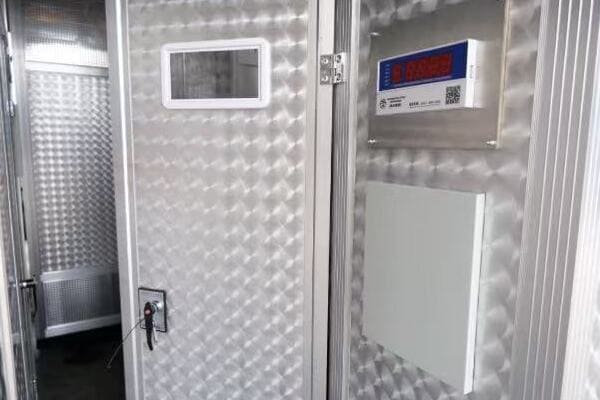
Let's explore how these invisible guardians keep our power flowing:
Smart Monitoring: Always on Guard
Modern enclosures are equipped with intelligent systems that keep a constant watch.
Key Features:
- Real-time temperature and humidity monitoring
- Vibration sensors to detect tampering or damage
- Remote access capabilities for quick response
Advanced Materials: Tough as Nails
The materials used in modern enclosures offer unprecedented protection.
Material Innovations:
- Impact-resistant composites
- Fire-retardant coatings
- Self-healing surfaces for minor damage repair
Environmental Control: Creating the Perfect Atmosphere
Maintaining ideal conditions inside the enclosure is crucial for equipment longevity.
Control Mechanisms:
- Advanced cooling systems for heat management
- Dehumidifiers to prevent moisture buildup
- Positive pressure systems to keep out dust and contaminants
Modular Design: Adaptable and Efficient
Flexibility in design allows for easy upgrades and maintenance.
Design Advantages:
- Easily replaceable components
- Scalable solutions for growing power needs
- Quick-access panels for routine checks
| Protection Aspect | Benefit to Power Supply | Urban Impact |
|---|---|---|
| Smart Monitoring | Rapid fault detection | Fewer unexpected outages |
| Advanced Materials | Enhanced durability | Lower maintenance costs |
| Environmental Control | Extended equipment life | Consistent power quality |
| Modular Design | Easier upgrades and repairs | Minimal disruption during maintenance |
I recall a project in a major metropolitan area where we were tasked with upgrading the transformer enclosures in a flood-prone district. The existing units were constantly at risk during heavy rains, leading to frequent power outages and expensive repairs.
Our solution was to design a new type of "amphibious" enclosure. These units were equipped with a watertight seal that could activate automatically when water levels rose. The base of the enclosure was designed to channel water away, while the internal components were mounted on a floating platform that would rise with flood waters.
The real test came during a severe storm that caused significant flooding in the area. While other parts of the city experienced power cuts, the district with our new enclosures maintained uninterrupted power supply. The enclosures performed flawlessly, with their internal systems remaining dry and functional even as water levels rose around them.
This success led to an interesting discovery. We found that by keeping the transformers operational during floods, we were actually helping to pump water out of the area more quickly, as the local drainage systems could continue functioning at full capacity. Our transformer enclosures had inadvertently become part of the city's flood management strategy.
In another project, we tackled the issue of vandalism and theft in an urban area with high crime rates. Traditional enclosures were frequently targeted, leading to costly repairs and dangerous situations. We developed a new enclosure design that incorporated several innovative security features.
The exterior was made of a specially developed material that was not only incredibly tough but also unpleasant to touch, deterring attempts to climb or tamper with the enclosure. We integrated motion sensors and cameras that could differentiate between routine maintenance activities and suspicious behavior, alerting authorities if needed.
One of the most effective features was a DNA spray system. If tampered with, the enclosure would release an invisible, harmless spray containing a unique DNA code. This would mark any intruders, linking them irrefutably to the crime scene. The mere presence of warning signs about this system proved to be a powerful deterrent.
The results were impressive. Incidents of vandalism and attempted theft dropped by over 90% in areas where these new enclosures were installed. This not only improved the reliability of the power supply but also contributed to an overall sense of increased safety in these neighborhoods.
We've also been working on integrating transformer enclosures with smart city initiatives. In one recent project, we designed enclosures that doubled as air quality monitoring stations. These units were equipped with sensors that could detect various pollutants and particulate matter levels.
The data collected by these enclosures was fed into the city's environmental monitoring system, providing real-time information on air quality across different areas. This not only helped in urban planning and traffic management but also allowed residents to make informed decisions about outdoor activities.
Looking to the future, we're exploring the potential of self-diagnosing and self-repairing enclosures. Imagine a transformer box that can detect a developing fault, order the necessary replacement part, and guide a technician through the repair process – all while continuing to supply power uninterrupted.
We're also investigating the use of advanced AI to predict and prevent potential issues before they occur. By analyzing patterns in power usage, weather data, and equipment performance, these smart enclosures could optimize their operations in real-time, potentially reducing energy losses and extending equipment lifespan.
The role of transformer enclosures in our urban environments is evolving. They're no longer just protective shells; they're becoming active participants in our smart cities. As we continue to innovate, these invisible guardians will play an increasingly important role in ensuring not just the reliability of our power supply, but also the overall quality of urban life.
Conclusion
Effective design of pad mounted transformer box enclosures is crucial for urban environments. By blending functionality with aesthetics, ensuring safety and weather resistance, and creatively integrating with cityscapes, these enclosures protect vital infrastructure while enhancing urban spaces.


